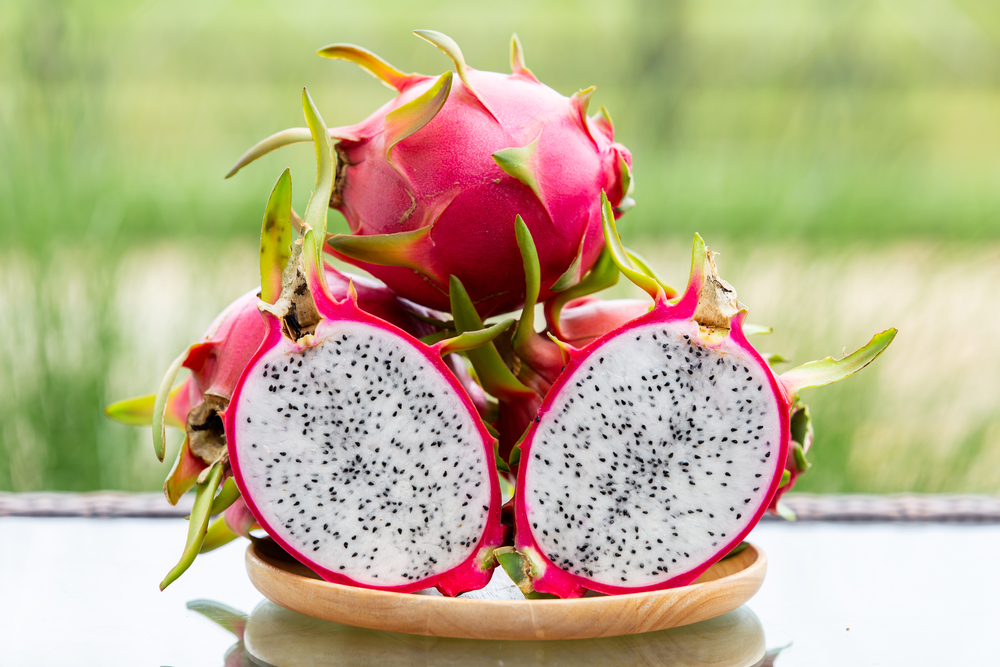Pitaya, also known as dragon fruit, is a tropical fruit that has been gaining popularity in recent years.
It is a unique-looking fruit with a bright pink or yellow outer skin and white or red flesh speckled with tiny black seeds. But what does pitaya taste like?
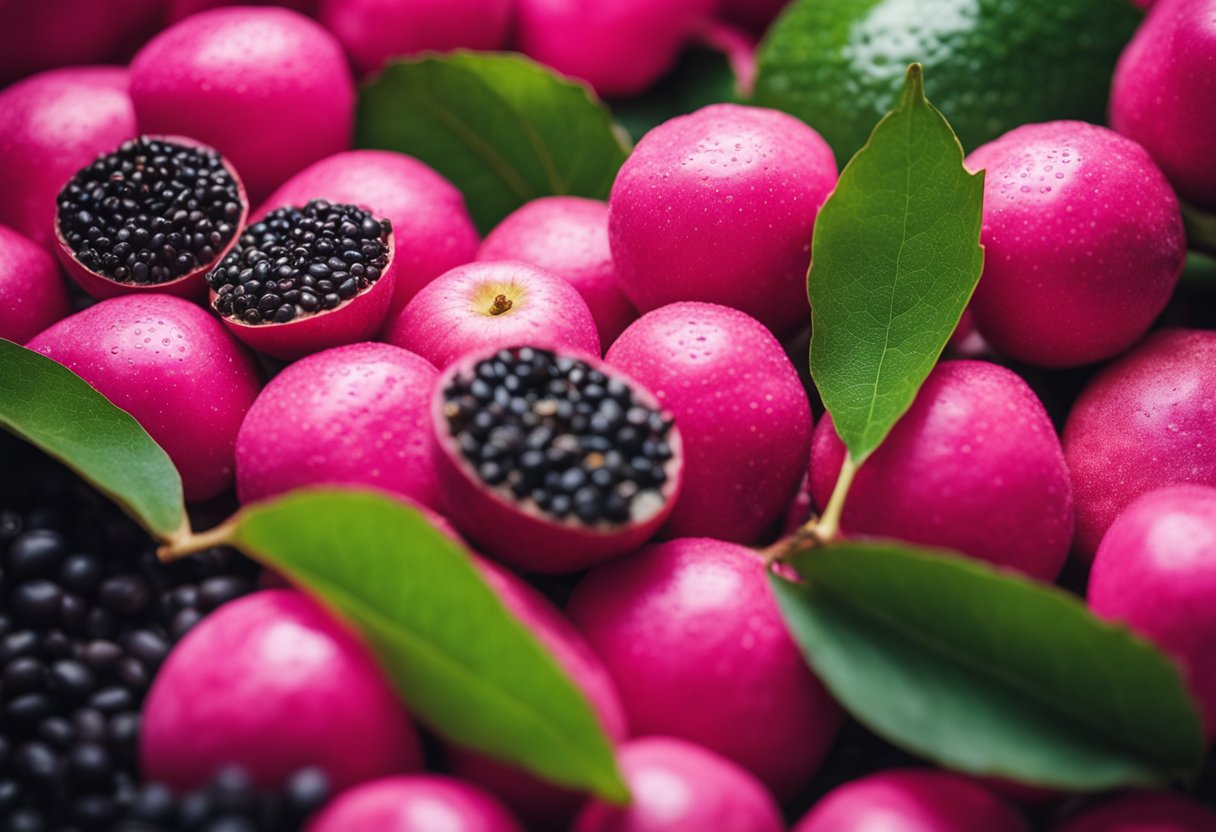
The taste of pitaya can be described as mildly sweet, with a flavor that is often compared to a cross between a pear and a kiwi.
Some varieties of pitaya have a more tart taste, while others are more mellow and refreshing. The texture of pitaya is similar to that of a kiwi, with a slightly crunchy bite and a soft, juicy center.
Pitaya is not only delicious but also packed with essential nutrients. It is low in calories, high in fiber, and contains a variety of vitamins and minerals.
In this article, we will delve deeper into the taste profile of pitaya, its nutritional content, and potential health benefits, as well as explore its culinary uses and storage and handling methods.
Key Takeaways
- Pitaya has a mildly sweet flavor that is often compared to a cross between a pear and a kiwi.
- It is a low-calorie fruit that is high in fiber and contains a variety of essential nutrients.
- Pitaya can be used in a variety of culinary applications and should be stored and handled properly to maintain its freshness.
Understanding Pitaya
Pitaya, also known as dragon fruit, is a tropical fruit that comes from the cactus plant family, specifically the genera Selenicereus and Hylocereus.
The fruit is native to Southern Mexico, Central America, and South America, but is now also grown in Southeast Asia and East Asia.
Pitaya is known for its unique appearance, with a bright pink or yellow spiky exterior and a soft, white or red flesh with small black seeds.
When it comes to taste, pitaya is often described as mildly sweet and vaguely tropical. It has been compared to a cross between a kiwi and a pear, with some people noting a slight nutty flavor.
The taste can vary depending on the variety of pitaya, with some being sweeter than others.
In addition to its taste, pitaya is also known for its nutritional benefits. The fruit is low in calories and high in fiber, making it a great option for those looking to maintain a healthy diet.
It is also high in vitamin C, calcium, and phosphorus, as well as antioxidants.
Overall, pitaya is a delicious and nutritious tropical fruit that is enjoyed by many around the world. Whether eaten on its own or added to smoothies, salads, or other dishes, pitaya is a versatile ingredient that can add both flavor and nutrition to any meal.
Physical Characteristics
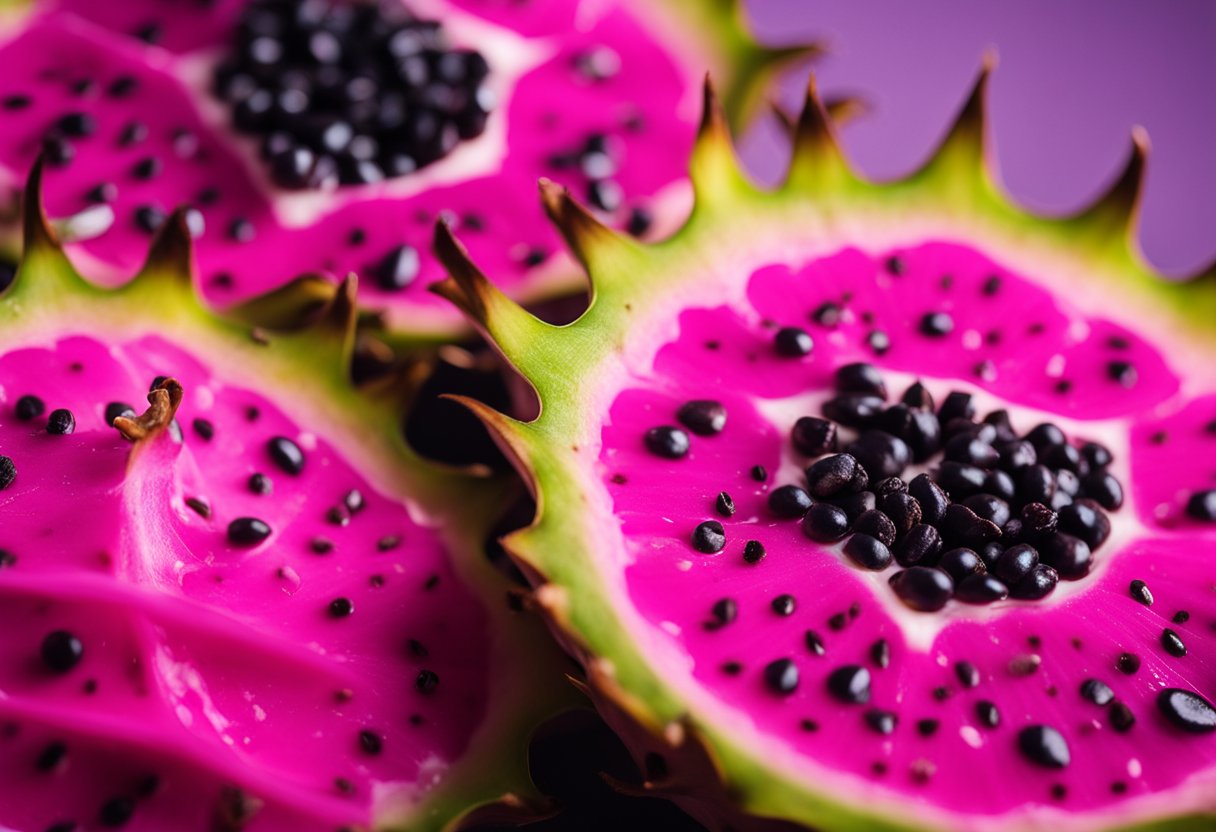
Dragon fruit, also known as pitaya, is a tropical fruit with a unique appearance. As I explore the taste of pitaya, it’s important to first understand its physical characteristics.
Color Varieties
Pitaya comes in three main color varieties: red, white, and yellow. The exterior of the fruit is covered in green scales, which can vary in size and shape. The skin of the fruit can be pink, yellow, or red, depending on the variety.
The flesh of the fruit can also vary in color. White-fleshed pitaya has a mild, sweet taste, while red-fleshed pitaya has a more intense, slightly tart flavor. Yellow dragon fruit, on the other hand, has a delicate, sweet taste.
Texture and Consistency
The texture and consistency of pitaya can also vary. The flesh of the fruit is typically firm, but can become softer as it ripens. Overripe pitaya can have a mushy texture and a less desirable taste.
The center of the fruit contains tiny black seeds, which are edible but can be slightly crunchy. The seeds are surrounded by a soft, juicy flesh that is similar in texture to that of a kiwi.
In summary, pitaya is a visually stunning fruit with a range of colors and textures. Its flesh can be white, red, or yellow, with a flavor that can be mild or intense.
The fruit’s black seeds are surrounded by a soft, juicy flesh that can be slightly crunchy.
Taste Profile
Pitaya, also known as dragon fruit, has a unique taste profile that can be described as sweet with a hint of sourness.
The flavor is often compared to a combination of strawberry, pear, melon, and pineapple with a texture similar to kiwi or pear.
When ripe, pitaya has a soft flesh that is juicy and slightly crunchy due to the small edible seeds. The taste can vary slightly depending on the variety of pitaya, but overall it is a refreshing and enjoyable flavor.
The sweetness of pitaya is not overpowering, making it a great addition to smoothies, salads, or as a garnish for desserts. The fruit’s mild taste also makes it a versatile ingredient that pairs well with other fruits and flavors.
Overall, pitaya has a tropical taste that is both refreshing and satisfying. Its unique flavor and texture make it a popular choice for those looking to add some variety to their diet.
Nutritional Content

Dragon fruit, also known as pitaya, is a tropical fruit that is not only delicious but also packed with nutrients.
In this section, I will discuss the nutritional content of dragon fruit, including vitamins and minerals, macronutrients, and beneficial compounds.
Vitamins and Minerals
Dragon fruit is a good source of several vitamins and minerals that are essential for good health. One cup of dragon fruit contains:
- Vitamin C: 34% of the recommended daily intake (RDI)
- Iron: 8% of the RDI
- Calcium: 8% of the RDI
- Magnesium: 18% of the RDI
Macronutrients
Dragon fruit is low in calories and high in fiber, making it a great addition to any diet. One cup of dragon fruit contains:
- Calories: 136
- Protein: 3 grams
- Carbohydrates: 29 grams
- Fat: 0.4 grams
- Dietary Fiber: 7 grams
Beneficial Compounds
Dragon fruit is also rich in several beneficial compounds, including betalains and oleic acid. Betalains are pigments that give dragon fruit its vibrant color and have been shown to have antioxidant and anti-inflammatory properties.
Oleic acid is a healthy monounsaturated fat that can help reduce inflammation and lower the risk of heart disease.
In conclusion, dragon fruit is a nutrient-dense fruit that is low in calories and high in fiber. It contains several vitamins and minerals that are essential for good health, as well as beneficial compounds like betalains and oleic acid.
Potential Health Benefits
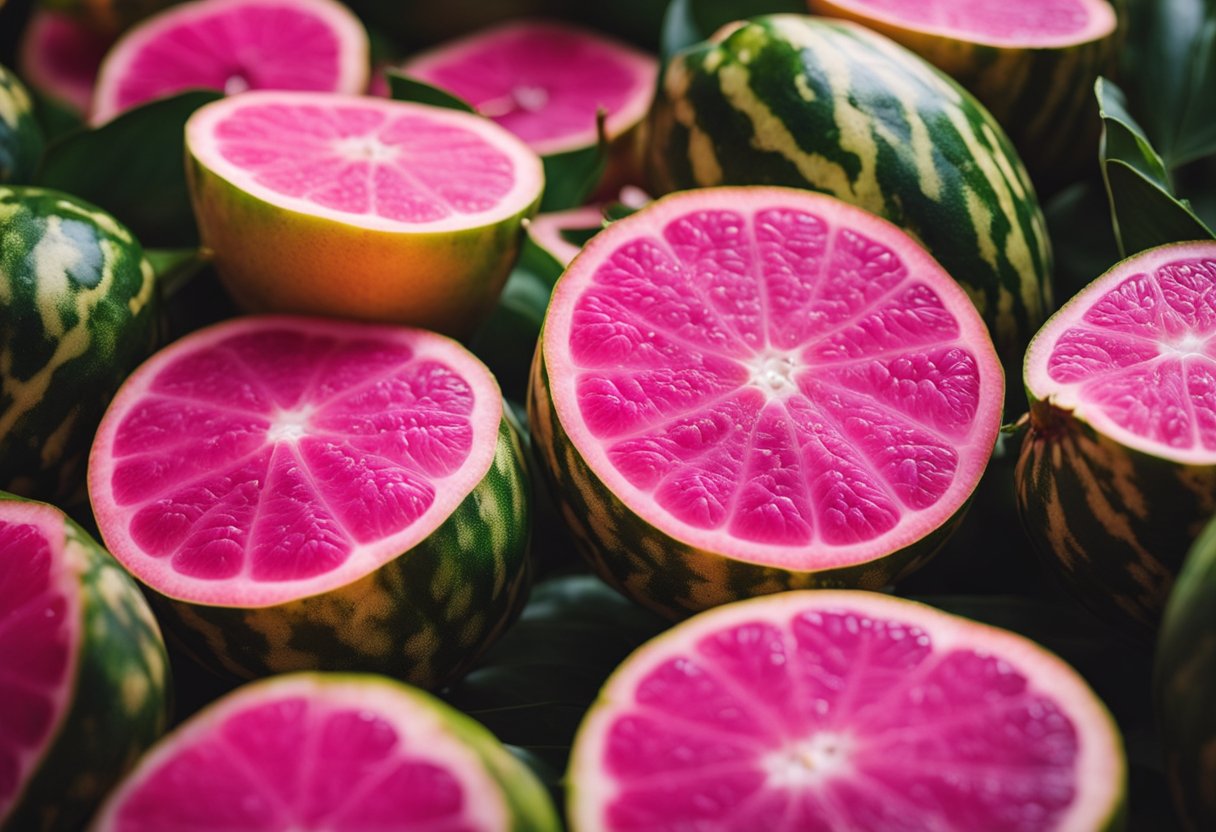
Pitaya, also known as dragon fruit, is a tropical fruit that is not only delicious but also packed with nutrients that offer a range of health benefits. In this section, I will discuss some of the potential health benefits of pitaya.
Blood Sugar Control
Pitaya is a great fruit for people with diabetes or those at risk of developing type 2 diabetes. It has a low glycemic index, which means it does not cause a rapid spike in blood sugar levels.
This is due to the high fiber content in the fruit, which slows down the absorption of sugar in the bloodstream.
Pitaya also contains antioxidants that help regulate blood sugar levels and prevent insulin resistance.
Heart Health
Pitaya is rich in nutrients that promote heart health. It contains fatty acids that help reduce bad cholesterol levels and increase good cholesterol levels in the body.
The fruit is also high in fiber, which helps reduce the risk of heart disease. Pitaya also contains flavonoids and other antioxidants that help prevent the oxidation of LDL cholesterol, which can lead to plaque buildup in the arteries.
Digestive Health
Pitaya is a great fruit for digestive health. It is high in fiber, which helps regulate bowel movements and prevent constipation.
The fruit also contains prebiotics that promote the growth of healthy gut bacteria. This can help improve digestion and prevent the growth of harmful bacteria in the gut.
Anti-Aging and Disease Prevention
Pitaya is rich in antioxidants that help prevent cell damage and slow down the aging process. The fruit also contains anti-inflammatory properties that help reduce the risk of chronic diseases such as cancer, Alzheimer’s, and Parkinson’s.
Pitaya is also rich in vitamin C, which helps boost the immune system and prevent infections.
In conclusion, pitaya is a delicious and nutritious fruit that offers a range of health benefits. Its high fiber content, antioxidants, and other nutrients make it an excellent addition to any diet.
Culinary Uses
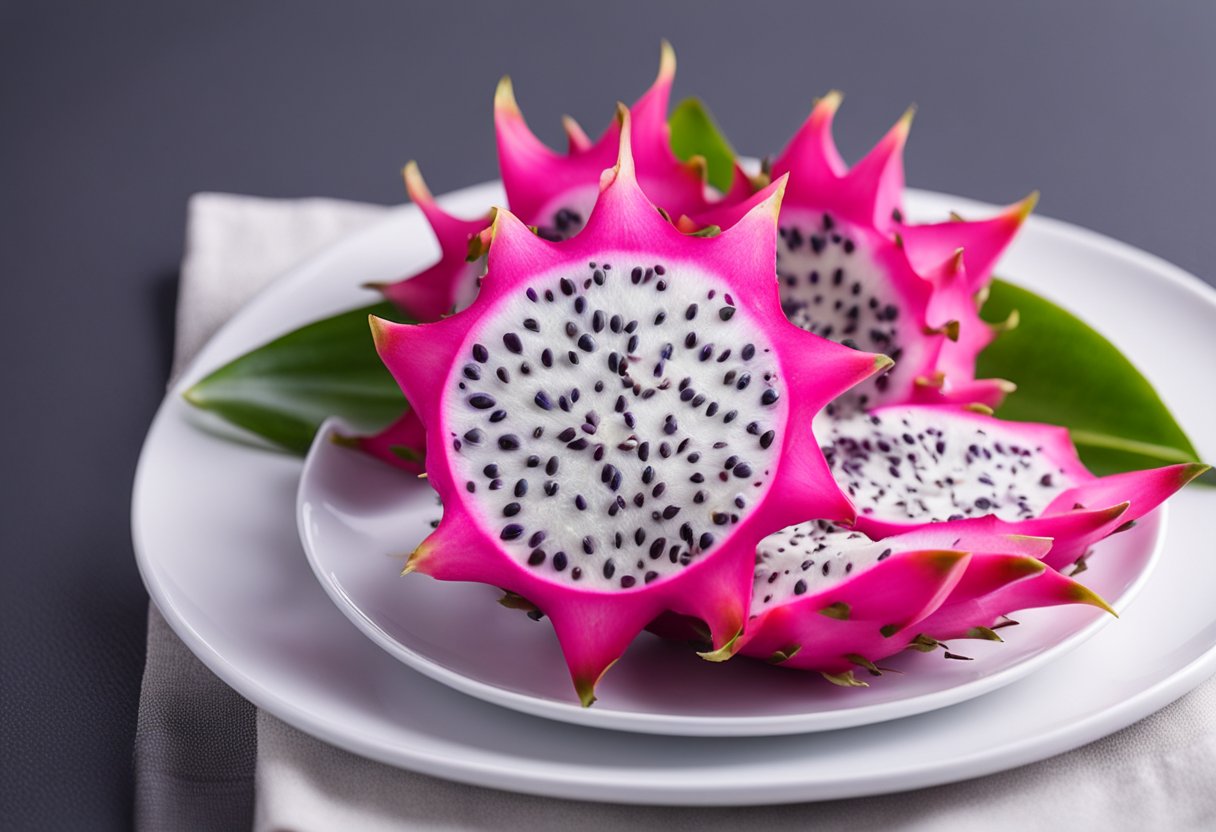
As a versatile fruit, pitaya can be consumed fresh, cooked, or used in beverages. Here are some ways to incorporate pitaya into your culinary creations:
Fresh Consumption
Pitaya is commonly eaten fresh, either on its own or as part of a fruit salad. Its mild sweetness and refreshing juiciness make it a perfect addition to any fruit platter.
When selecting pitaya for fresh consumption, look for fruits that are firm to the touch, with bright, even-colored skin.
Cooking and Baking
While pitaya is often eaten raw, it can also be cooked or baked into various dishes. Its mild flavor and vibrant color make it an excellent ingredient for desserts, such as sorbets, cakes, and tarts.
Pitaya can also be used to add a pop of color and flavor to savory dishes, such as fish or tuna ceviche.
Beverage Preparation
Pitaya can be used to make a variety of refreshing beverages, including smoothies, cocktails, and mocktails. Its bright color and mild sweetness make it a popular ingredient for tropical drinks.
To prepare a pitaya smoothie, blend fresh pitaya with your favorite fruits and yogurt or milk. For a pitaya cocktail, combine pitaya puree with rum, lime juice, and simple syrup.
Overall, pitaya is a versatile fruit that can be used in a variety of culinary applications. Its mild sweetness and vibrant color make it a popular ingredient for both sweet and savory dishes, as well as refreshing beverages.
When selecting pitaya for culinary use, look for fruits that are firm to the touch and have bright, even-colored skin.
Storage and Handling

Fresh Pitaya
When it comes to storing fresh pitaya, it’s important to keep it at room temperature for a few days. This allows the fruit to ripen and become sweeter.
Once the fruit is ripe, it can be stored in the refrigerator for up to a week. Make sure to store it in a plastic bag or container to prevent moisture loss.
When handling fresh pitaya, it’s important to take care when cutting it open. The skin can be tough and spiky, so use a sharp knife and cut away from your body. The flesh of the fruit is delicate, so be gentle when removing it from the skin.
Frozen Pitaya
Frozen pitaya is a convenient way to enjoy the fruit year-round. It’s important to store frozen pitaya in the freezer until you’re ready to use it. Once you’ve thawed the fruit, it’s best to use it immediately.
When handling frozen pitaya, it’s important to let it thaw completely before using it. This can be done by placing the fruit in the refrigerator overnight or by leaving it out at room temperature for a few hours.
Once the fruit is thawed, it can be used in smoothies, desserts, or eaten on its own.
Whether you’re working with fresh or frozen pitaya, it’s important to handle the fruit gently to avoid damaging the delicate flesh. By following these tips, you can ensure that your pitaya stays firm and delicious.
Pitaya Varieties
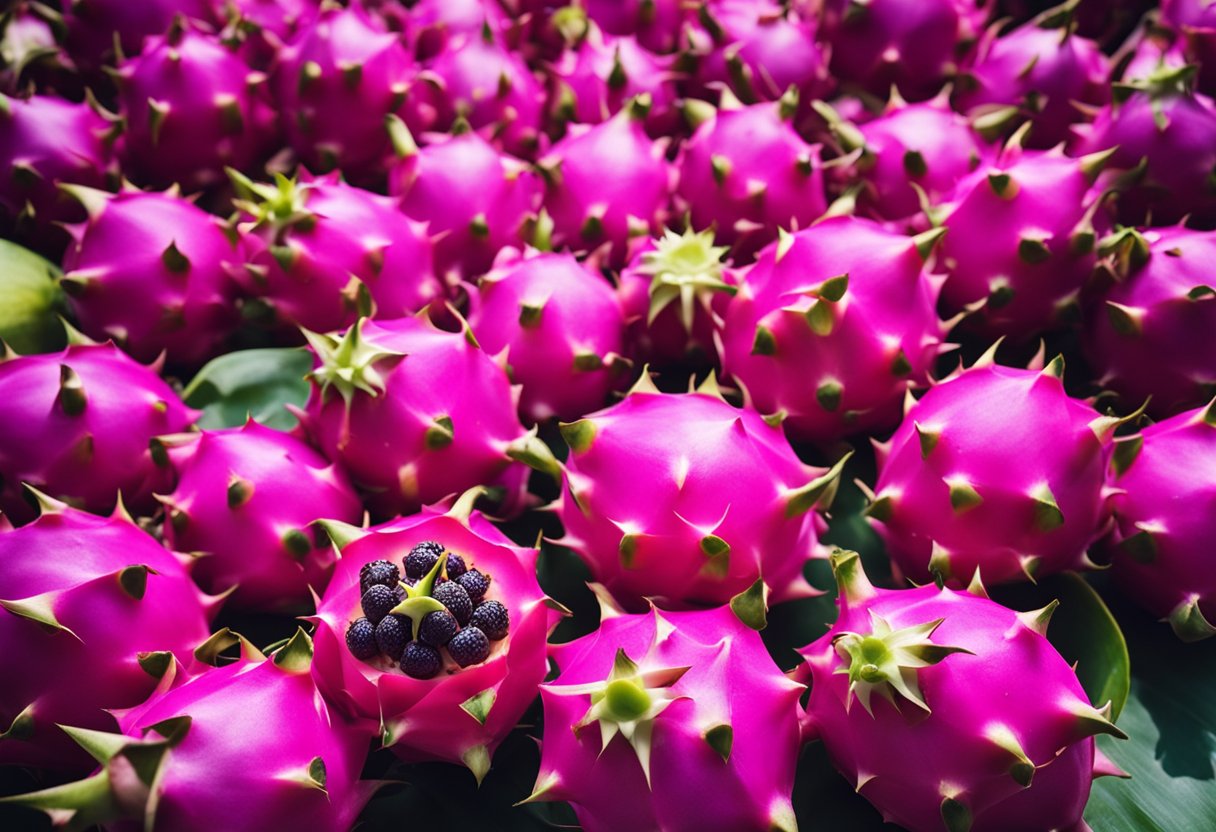
I have tasted a few varieties of pitaya, and each one has its unique flavor profile. Pitaya comes in three main varieties – red skin with white flesh, red skin with red flesh, and yellow skin with white flesh.
The red skin with white flesh variety is the most common and has a sweet, mild taste with a texture similar to kiwi.
The red skin with red flesh variety has a more intense flavor and is sweeter than the white-fleshed variety. The yellow skin with white flesh variety has a milder taste and is less sweet than the red-skinned varieties.
The genus of pitaya is Hylocereus, and it belongs to the cactus family. The fruit is also known as dragon fruit and is native to Central and South America.
According to the United States Department of Agriculture (USDA), pitaya contains essential nutrients such as Vitamin C, fiber, and antioxidants. The fruit is low in calories and is a good source of hydration due to its high water content.
In conclusion, pitaya comes in three main varieties, each with its unique taste and texture. The fruit belongs to the cactus family and is a good source of essential nutrients.
Conclusion
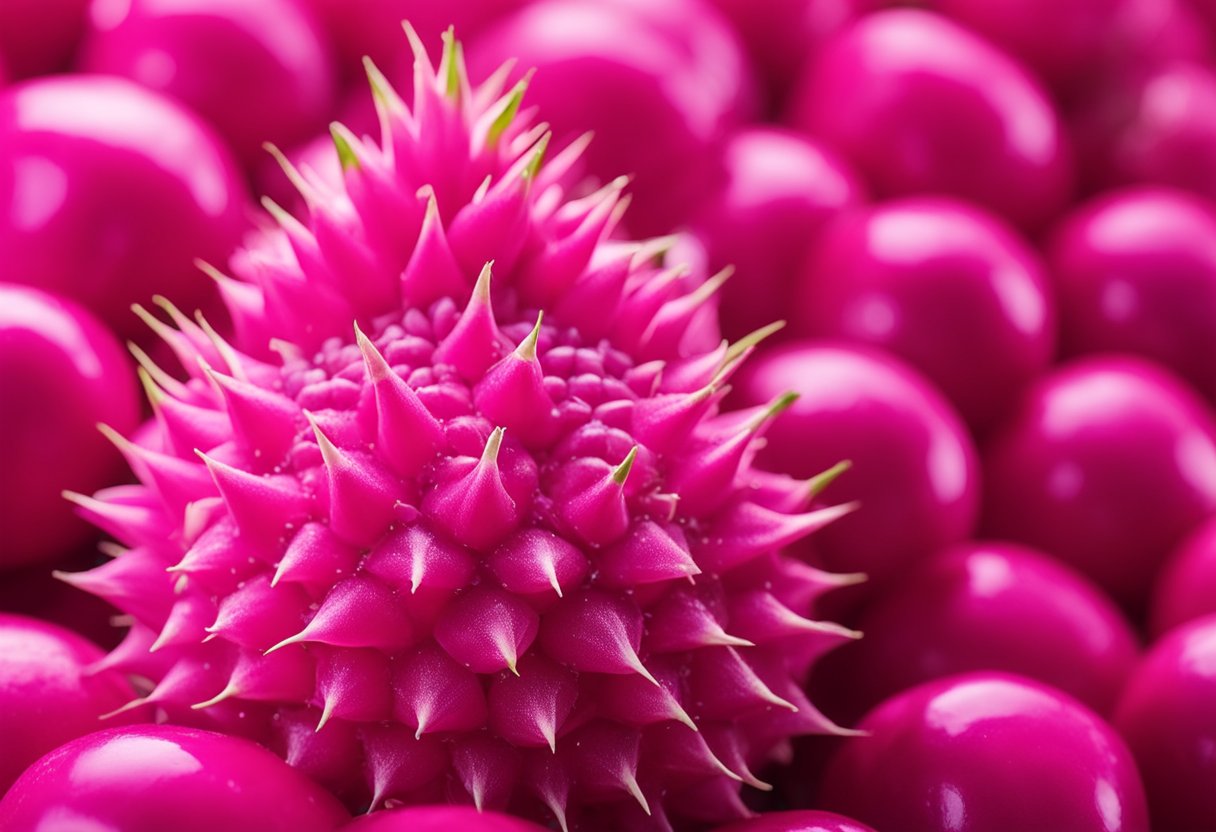
In conclusion, pitaya is a unique and delicious fruit that has gained popularity in recent years due to its exotic appearance and tropical taste.
The fruit has a mildly sweet flavor with refreshing juiciness and floral notes that make it a taste sensation like no other.
Pitaya is also a nutritious fruit that is high in fiber, antioxidants, vitamin C, calcium, and phosphorus, making it a healthy addition to any diet.
The red and white varieties of pitaya have slightly different tastes, with the red variety being sweeter and the white variety being milder.
When it comes to eating pitaya, it can be enjoyed on its own or used as an ingredient in smoothies, salads, and desserts. The fruit is also versatile enough to be used in savory dishes such as stir-fries and curries.
Overall, pitaya is a fruit that is definitely worth trying if you have not yet had the chance to taste it. With its unique flavor and health benefits, it’s no wonder that pitaya has become a popular fruit around the world.
Frequently Asked Questions
What are the different types of dragon fruit?
There are three main types of dragon fruit: white, red, and yellow. White dragon fruit has a mild, slightly sweet flavor, while red dragon fruit is sweeter and tastes like raspberries. Yellow dragon fruit has a more tart flavor, similar to a kiwi.
What are the benefits of eating dragon fruit?
Dragon fruit is loaded with nutrients, including vitamin C, fiber, and antioxidants. It can help boost your immune system, aid in digestion, and even improve your skin health.
How can you tell if a dragon fruit is ripe?
A ripe dragon fruit should have bright, even-colored skin and be slightly soft to the touch. If the skin is wrinkled or the fruit feels mushy, it may be overripe.
What are some delicious dragon fruit recipes?
Dragon fruit can be used in a variety of recipes, from smoothie bowls to salads. One popular recipe is dragon fruit salsa, which combines diced dragon fruit with red onion, jalapeño, lime juice, and cilantro.
Another tasty option is dragon fruit sorbet, which is made by blending frozen dragon fruit with coconut milk and honey.
Is dragon fruit the same as pitaya?
Yes, dragon fruit is also known as pitaya. It is a tropical fruit that comes from a cactus plant.
What does a pitaya smoothie taste like?
A pitaya smoothie has a sweet, tropical flavor with a slightly tart undertone. It is often described as refreshing and juicy, making it the perfect treat on a hot day.


